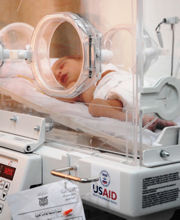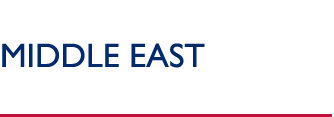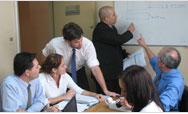 |
|
 |
 |
 |
| USAID Information:
External Links:
|
|
 |
 |
|
Yemen

SNAPSHOT
Date of independence: 1990
Population: 21.6 million (2006)
GDP per person: $760 (yr)
Source: World Bank Development Indicators 2006
CONTACTS
Country Representative
Mike E. Sarhan
USAID/Yemen
6330 Sanaa Place
Washington, DC 20521-6330
Tel: 967-1-755-2000
Acting Desk Officer
Nathan Park
Tel: (202) 712-5868
Email: npark@usaid.gov

USAID provides medical equipment to save the lives of many children in rural Yemen.
(Photo: USAID/Mark Austin)
Overview
Yemen’s government has taken meaningful steps toward substantive political and economic reforms in 2006, 2007, and continuing into 2008. Despite this progress, Yemen remains one of the least developed countries in the world, ranking 153rd out of 177 countries on the United Nations Development Programme’s Human Development Report in 2007. It faces enormous development challenges with some of the worst indicators in the region.
Programs
Governing Justly and Democratically
Yemen's government ranks below the 25th percentile globally in its effectiveness. This low ranking is indicative of much-needed reform within the government. USAID assists the Yemeni government’s efforts to formalize the National Decentralization Strategy as well as to strengthen the capacity and institutional development of local councils at the governorate and district levels in planning, budgeting, and management.
USAID also supports free and fair parliamentary elections in Yemen through its activities to increase the capacity of the Supreme Commission for Elections and Referendum. USAID programs improve the Commission’s ability to implement its responsibilities efficiently and transparently. These programs assist the Commission in establishing electoral district boundaries, encouraging voter registration, enhancing women’s participation, and improving campaign financing and election monitoring.
USAID supports the efforts of members of parliament to reform anticorruption policy and legislative advocacy. USAID also contributes to parliamentarians’ efforts to improve the budget-making and oversight functions of the legislature and to increase the capacity of key reform-oriented committees. Additionally, USAID is working with the Supreme National Authority for Combating Corruption, the Higher Tender Board, the Central Organization for Control and Audit, and the Yemeni Journalists Syndicate in order to strengthen the ability of these organizations to combat corruption.
USAID also supports tribal conflict mitigation programs. Activities include promoting peaceful resolutions to conflict through dialogue, outreach, and anti-violence youth campaigns. USAID also assists tribal leaders in their efforts to resolve longstanding conflicts that delay much-needed democratic, economic, and educational reforms.
Investing In People: Health
To create lasting changes in the health system in remote governorates, USAID renovates health clinics and housing for health providers; provides basic medical equipment to health facilities; trains midwives and doctors to improve emergency obstetric and pre- and postnatal care; and improves counseling services and community health education. Over the past year, more than 643 health workers were trained in counseling and health education, including community health education. Through mobile health teams and renovated facilities, USAID brought health care services to over 53,709 people in its target governorates. USAID also supports the national Health Information System, which allows the Ministry of Public Health and Population and governorate health offices to improve their collection and utilization of health statistics for better resource management. USAID also has piloted new guidelines for increased routine immunization coverage. In addition, USAID has participated in several rounds of national polio campaigns, reaching places where children had never been vaccinated.
Investing In People: Education
Yemen’s education indicators are among the lowest in the Middle East. The primary school attendance rate is only 45 percent for girls, with only 15 percent of girls going on to secondary school. To support Yemen’s efforts to strengthen its basic education system, USAID has developed new programs to improve education, especially for women and girls. In 2007, these programs trained 1,307 teachers in teaching Arabic, science, and mathematics; 132 teacher trainers; 109 community organizations; 61 community participation and literacy specialists; and 78 social workers. USAID supported 12 summer camps that were independently organized by established parent councils. An estimated 6,000 students have benefited from USAID-sponsored life skills classes; over 5,500 women have participated in literacy classes; and all 77 target schools have benefited from supplementary reading materials.
Economic Growth: Creating Economic Opportunity
In the remote areas where USAID works, most people are employed in agriculture and herding, and poverty levels are high. In 2007, USAID signed an agreement with Yemen’s Ministry of Agriculture to assist in improving the marketing and trade capacity of farming associations and cooperatives, with a focus on increasing exports of agricultural goods and, in turn, raising the income of agricultural communities.
Back to Top ^
|


